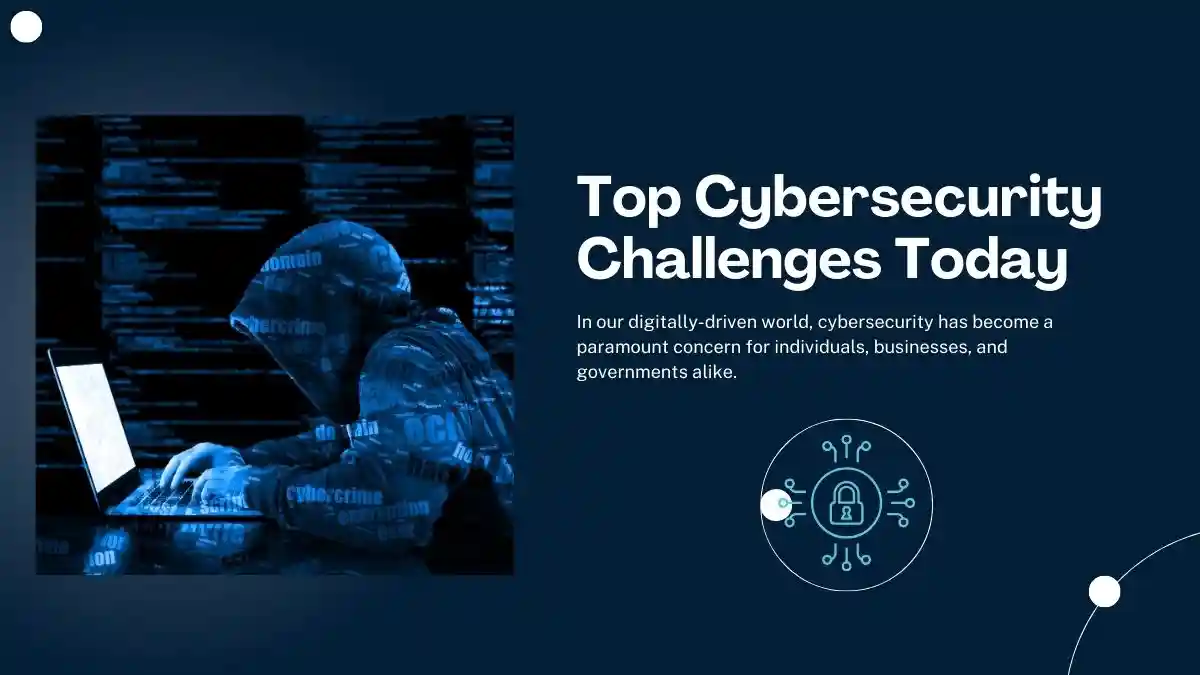In our digitally driven world, cybersecurity has become a paramount concern for individuals, businesses, and governments alike. As technology advances, so do the methods and tactics of cyber attackers, creating an ongoing challenge for cybersecurity professionals.
The landscape of cybersecurity is constantly evolving, with new threats emerging almost daily. Understanding these challenges is crucial for developing effective strategies to protect sensitive information and infrastructure.
In this article, we delve into the top cybersecurity challenges faced today. From sophisticated phishing attacks to the complexities of cloud security, we’ll explore the various hurdles that define the current state of cybersecurity and how they shape our approach to digital defence.
Read: Top 15 Best Websites For Aptitude Test Preparation
1. Phishing Attacks and Social Engineering
Phishing attacks, a form of social engineering, remain one of the top cybersecurity challenges. Cybercriminals continue to devise ingenious ways to trick individuals into divulging sensitive information through deceptive emails, messages, or websites.
These attacks are becoming increasingly sophisticated, making it harder to distinguish between legitimate communications and fraudulent ones. Organisations are now focusing on training employees to recognise and report phishing attempts.
However, as attackers constantly refine their tactics, maintaining awareness and educating users remain ongoing challenges.
Phishing attacks not only target financial information but can also serve as gateways for larger security breaches, underlining their significance in the cybersecurity landscape.
2. Ransomware Threats
Ransomware threats, a critical focus in master’s in cybersecurity programs, present a significant challenge in today’s digital landscape. These programs equip aspiring cybersecurity professionals with advanced knowledge and strategies to combat such threats.
The curriculum often includes an in-depth analysis of ransomware attacks, exploring their mechanisms, impact, and the latest defence methodologies.
Students learn about encryption tactics used by attackers and how to implement robust security measures, including data backup strategies and intrusion detection systems. A Master’s in Cybersecurity prepares individuals to anticipate, respond to, and recover from ransomware attacks effectively.
With ransomware constantly evolving, the specialised training and insights gained from these programs are invaluable in equipping professionals to protect organisations against these disruptive and costly cyber threats.
Read: 10 Best Android Root Software for PC/Computer
3. Cloud Security Complexities

As businesses increasingly migrate to the cloud, ensuring the security of cloud-based systems and data has become a significant challenge.
Cloud environments offer numerous benefits, but they also present unique security concerns, such as data breaches, inadequate access controls, and vulnerability to attacks.
The shared responsibility model in cloud security adds to the complexity, as both cloud service providers and clients must work together to ensure comprehensive protection.
Ensuring data privacy, compliance with regulatory standards, and managing multi-cloud environments are other critical challenges faced by organisations.
Adopting a robust cloud security posture, continuous monitoring, and employing best practices are essential to safeguard assets in the cloud effectively.
4. IoT Security Vulnerabilities
The Internet of Things (IoT) has transformed various industries, but it also introduces significant security vulnerabilities. IoT devices, often with inadequate security measures, can be easily compromised, posing threats to the broader network.
These devices can serve as entry points for attackers, leading to data breaches or distributed denial-of-service (DDoS) attacks. The challenge lies in securing a vast number of devices with diverse functionalities and operating systems.
Additionally, ensuring the security of the data transmitted and stored by IoT devices is crucial. Organisations must prioritise IoT security by implementing strong authentication measures, regularly updating firmware, and monitoring network activity to detect and mitigate potential threats.
5. Insider Threats
Insider threats, whether intentional or accidental, are a significant cybersecurity challenge. These threats come from individuals within the organisation, such as employees, contractors, or business partners, who have access to sensitive systems and data.
Malicious insiders can cause substantial damage, while unintentional threats often arise from negligence or lack of awareness. Mitigating insider threats involves a combination of technical controls, such as access management and user behaviour analytics, and organisational measures, including comprehensive security policies and regular employee training.
Building a culture of security awareness and implementing a robust insider threat program are crucial steps in protecting against these internal risks.
6. Mobile Security Breaches
The ubiquity of mobile devices in both personal and professional realms has opened a new avenue for cyber threats. Mobile security breaches are increasingly common, with attackers exploiting vulnerabilities in apps, operating systems, and unsecured Wi-Fi networks.
These breaches can lead to unauthorised access to sensitive data, financial loss, and identity theft. The challenge lies in securing a diverse array of devices often used outside the secure corporate network.
Organisations need to implement strong mobile device management (MDM) policies, ensure regular updates, and educate users on secure practices. Encouraging the use of VPNs, strong authentication methods, and safe browsing practices on mobile devices is essential to mitigate these risks.
7. Artificial Intelligence and Machine Learning Threats

The integration of Artificial Intelligence (AI) and Machine Learning (ML) in cybersecurity brings both advancements and new challenges. While AI/ML can significantly enhance threat detection and response, these technologies also give rise to sophisticated AI-powered cyber attacks.
Attackers are using AI to automate attacks, personalise phishing attempts, and create more elusive malware. The AI cybersecurity arms race requires constant innovation from defenders to stay ahead of these evolving threats.
Organisations must be cautious in adopting AI/ML solutions, ensuring they understand the potential risks and implement robust security measures to protect AI systems from being compromised or used maliciously.
Conclusion
Today’s cybersecurity landscape is characterised by a multitude of challenges, ranging from sophisticated phishing attacks and AI-powered threats to ensuring mobile security and compliance with regulations.
Navigating these challenges requires a comprehensive, dynamic approach that combines advanced technology, skilled professionals, and continuous vigilance. As cyber threats continue to evolve, staying informed, prepared, and adaptable is crucial.
Organisations must foster a culture of security awareness, invest in the right tools and talent, and collaborate with partners to build a resilient defence against the ever-changing cyber threats. By doing so, they can protect their assets, maintain trust, and operate confidently in the digital realm.
You might also like to read










